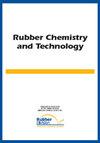接近可持续性:纳米纤维素增强弹性体综述
IF 1.5
4区 工程技术
Q4 POLYMER SCIENCE
引用次数: 0
摘要
意识到传统增强填料对环境的影响,以及减少碳足迹的迫切需要,使研究人员更多地关注自然和可持续的材料。纳米纤维素由于其独特的特性,如可再生、可持续性、丰富度、可生物降解性、高长径比、优异的机械性能和低成本,在弹性体工程中得到了广泛的应用。在弹性体增强中,传统填料的绿色替代品已经获得了相当大的兴趣,以遏制来自不可再生资源的填料的风险。纳米纤维素和弹性体在性能上的差异使得在寻找由它们的组合产生的协同性能方面具有吸引力。本文综述了纳米纤维素的分离技术及其与弹性体基质结合的挑战。讨论了解决填料与基体不相容的表面修饰。本文还详细讨论了纳米复合材料的加工、各种表征技术、力学行为以及纳米纤维素弹性体复合材料的潜在应用。本文章由计算机程序翻译,如有差异,请以英文原文为准。
APPROACHING SUSTAINABILITY: NANOCELLULOSE REINFORCED ELASTOMERS—A REVIEW
Awareness of the environmental implications of conventional reinforcing fillers and the urge to reduce the carbon footprint have lead researchers to focus more on natural and sustainable materials. Nanocellulose from multitudinous sources finds use in elastomer engineering because of its distinctive properties, such as renewability, sustainability, abundance, biodegradability, high aspect ratio, excellent mechanical properties, and low cost. Green alternatives for conventional fillers in elastomer reinforcing have gained considerable interest to curb the risk of fillers from nonrenewable sources. The differences in properties of nanocellulose and elastomers render attractiveness in the search for synergistic properties resulting from their combination. This review addresses the isolation techniques for nanocellulose and challenges in its incorporation into the elastomer matrix. Surface modifications for solving incompatibility between filler and matrices are discussed. Processing of nanocomposites, various characterization techniques, mechanical behavior, and potential applications of nanocellulose elastomer composites are also discussed in detail.
求助全文
通过发布文献求助,成功后即可免费获取论文全文。
去求助
来源期刊

Rubber Chemistry and Technology
工程技术-高分子科学
CiteScore
3.50
自引率
20.00%
发文量
21
审稿时长
3.6 months
期刊介绍:
The scope of RC&T covers:
-Chemistry and Properties-
Mechanics-
Materials Science-
Nanocomposites-
Biotechnology-
Rubber Recycling-
Green Technology-
Characterization and Simulation.
Published continuously since 1928, the journal provides the deepest archive of published research in the field. Rubber Chemistry & Technology is read by scientists and engineers in academia, industry and government.
 求助内容:
求助内容: 应助结果提醒方式:
应助结果提醒方式:


